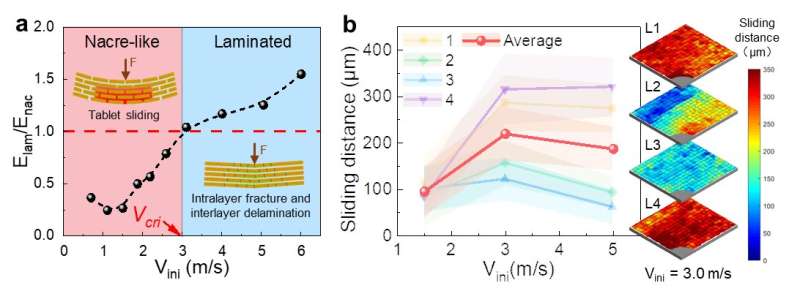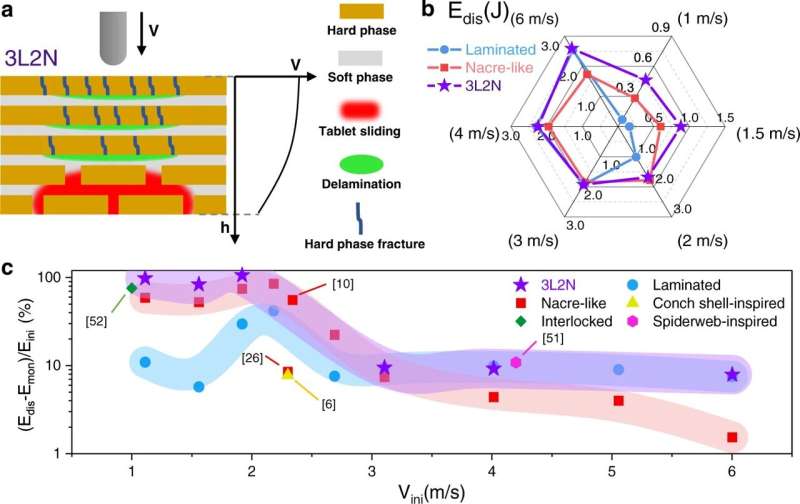New strategy for enhancing architectural resistance at different impact velocities
Nacre-like architectures are bio-inspired structures that perform well as impact-resistant templates at static or specific low-speed loads. Recently, a research team led by Prof. Ni Yong and Prof. He Linghui from the University of Science and Technology (USTC) found that nacre-like structures dissipate less energy than laminated structures when impact velocity exceeds a critical value. Further, they designed a hybrid architecture to cope with a wide range of impact velocities. Their research was published in Nature Communications.
The “brick-and-mortar” arrangement of nacres enables them to dissipate impact energy when smashed by predators. Previous research has confirmed the high impact resistance of nacre-like structures at low impact velocities. To compare the impact resistance of nacre-like structures in a wide range of impact velocities, the team laminated laser-engraved glass sheets with polymeric interlayers to mimic natural nacre structure and performed drop tower tests to compare the impact resistance of the nacre-like structures, laminated structures and monolithic structures.

The results showed that nacre-like structures exhibit higher impact resistance in a narrow range of low impact velocities because the tablets slide over large volumes. When the impact velocity exceeded the critical value, radial cracks and delamination occurred in laminated structures and dissipated more energy, performing higher resistance than nacre-like structures.
The team also revealed the relations between the critical impact velocity and the structural sizes and boundary conditions, which explained why the natural nacre with nanoscale multi-layered structures would be crushed when the impact velocity of the predators is above ranging from 14.7 to 23.5 m/s.

Based on their findings, the team designed a hybrid panel composed of the laminated structures in the front high velocity region and the nacre-like structures in the back low velocity region, which combines the advantages of both structures. The test results showed that the hybrid design exhibited optimal impact resistance over a wide range of impact velocities.
This work provided a simple and effective strategy that can be applied to other structures in the future to enhance resistance performance in a wider range of impact velocities.
Xiao Zhang et al, Anomalous inapplicability of nacre-like architectures as impact-resistant templates in a wide range of impact velocities, Nature Communications (2022). DOI: 10.1038/s41467-022-35439-3
Provided by
University of Science and Technology of China
Citation:
New strategy for enhancing architectural resistance at different impact velocities (2023, January 5)
retrieved 5 January 2023
from https://techxplore.com/news/2023-01-strategy-architectural-resistance-impact-velocities.html
This document is subject to copyright. Apart from any fair dealing for the purpose of private study or research, no
part may be reproduced without the written permission. The content is provided for information purposes only.
For all the latest Technology News Click Here
For the latest news and updates, follow us on Google News.

